
today's catalog, other catalog, top page, sample, Le monde washitsurai-jiku watermark wide samplebook
lamp-A, lamp-SH,chigiri, chigitte, uruwashi,makigami,habutae, BANK, Material,, inquire,
the day and after and NIKKEI DESIGN and MILANO
|
|
![]()
![]()
![]()
![]()
![]()
 |
|||||||||||||||
  |
|||||||||||||||
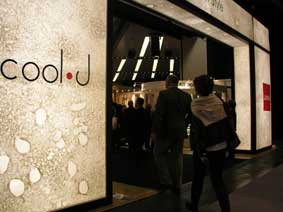  |
|||||||||||||||
   |
|||||||||||||||
|
|||||||||||||||
  |
|||||||||||||||
|
|||||||||||||||
  |
||||||||||||||
|
designed by Ma.Cosimo |
||||||||||||||
|
|
|
|||||||||||||||
 kurojiku-102 |
|
||||||||||||||
|
|||||||||||||||
 |
|||||||||||||||
  |
|||||||||||||||
 |
|
||||||||||||||
|
|||||||||||||||
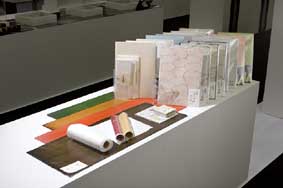
 |
||||||||||||||||
 Mouse Small (nezumi S) |
 Mouse Large (nezumi L) |
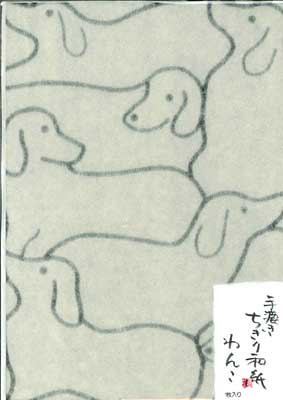 Dog (wanko) |
||||||||||||||
 Cat (neko) |
 Seals (azarashi) |
 Rabbit (usagi)
|
||||||||||||||
 Birds (tori)
|
 Thin fish (hosoi-sakana) |
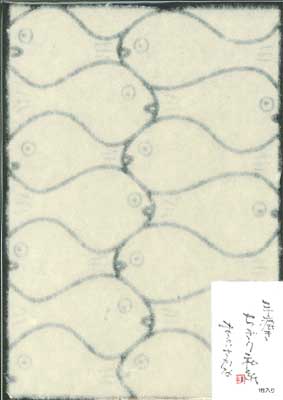 Round fish (marui-sakana) |
||||||||||||||
 Penguin (pengin) |
 Plover (chidori) |
designed by yonori | ||||||||||||||
|
||||||||||||||||

Joerg Angel
Animal Cube Lamp (ACL)
 ACL Mouse Small (nezumi S) |
 ACL Mouse Large (nezumi L) |
 ACL Dog (wanko) |
||||||||||||||
 ACL Cat (neko) |
 ACL Seals (azarashi) |
 ACL Rabbit (usagi)
|
||||||||||||||
 ACL Birds (tori)
|
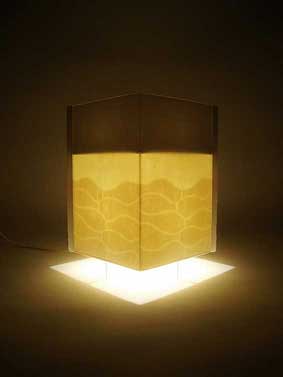 ACL Thin fish (hosoi-sakana) |
 ACL Round fish (marui-sakana) |
||||||||||||||
 ACL Penguin (pengin) |
 ACL Plover (chidori) |
designed by Joerg |
||||||||||||||
|
||||||||||||||||
 |
 |
 |
designed by Joerg |
 SHCL-Jet-Plain |
 SHCL-Jet-Plain-&-Top |
||||||||||||||
|
designed by Joerg | ||||||||||||||
|
|||||||||||||||
 SHCL-Stripe-Plain |
 SHCL-Stripe-Plein-&-Top |
||||||||||||||
|
designed by Joerg | ||||||||||||||
|
|||||||||||||||
 SHCL-Sky-Plain |
 SHCL-Sky-Top |
||||||||||||||
|
designed by Joerg | ||||||||||||||
|
|||||||||||||||
 SHCL-Beam-Plain |
 SHCL-Beam-Top |
||||||||||||||
|
designed by Joerg | ||||||||||||||
|
|||||||||||||||
 SHCL-Check-Plain |
 SHCL-Check-Top |
||||||||||||||
|
designed by Joerg | ||||||||||||||
|
|||||||||||||||
 SHCL-Smoke-Plain |
 SHCL-Smoke-Top |
||||||||||||||
|
designed by Joerg | ||||||||||||||
|
|||||||||||||||
 SHCL-Square-Plain |
 SHCL-Square-Top |
||||||||||||||
|
designed by Joerg | ||||||||||||||
|
|||||||||||||||
 SHCL-Bubble-Top |
designed by Joerg |
||||||||||||||
|
|||||||||||||||
 |
 WHITE |
|||||||||||||||||
 |
||||||||||||||||||
 BEIGE |
 SAKURA |
 SUMI |
||||||||||||||||
|
||||||||||||||||||
|
 CHERRY (sakura) |
||||||||||||||
 |
 PINE (matsu) |
||||||||||||||
|
|||||||||||||||
|
|||||||||||||||
 |
 |
||||||||||||||
|
|||||||||||||||
 |
|||||||||||||||||
|
|||||||||||||||||
 |
||||||||||||||||
|
 |
 |
||||||||||||||||
|
|||||||||||||||||
 |
||||||||||||||
|
|
|
|
 |
|||||||||||||||
|
|||||||||||||||
 |
|||||||||||||||
|
|||||||||||||||
| BANQUE; The Fukui Bank,Ltd.,Okamoto Branch Adresse;11-13,Shinzaike,Echizen-shi,Fukui Pref.915-0232,Japan Nr.de telephone; 81-778-43-0840 SWIFT CODE; FKUIJPJT Compte; KA)SUGIHARASHIYOUTEN. Nr.de compte; 0147-235-0027074 Nr.de compte; FU0027074 |
| |
Bank Name; The Fukui Bank,Ltd.,Okamoto Branch |
| ASA |
CHANVER / LIN hemp |
麻 |
| AMI |
FILET |
網 |
BYOUBU |
folding screen | 屏風 |
| EGOMA-OIL |
Oil taken from the seed of EGOMA. EGOMA is labiate annual plant. |
荏胡麻 |
| GANPI |
Wikstroemia sikokiana Franch.et Sav. |
雁皮 がんぴ |
GIJYUTSU |
Technique | 技術 |
| HASSUI |
UNE COMMANDE SPECIALE DE L'EAU LA FINITION INSENSIBLE EST AUSSI POSSIBLE. |
撥水 |
| HEMP | A best fiber plant, available throughout the word. | 麻、ヘンプ |
| ICHOU |
Ginkgo | 銀杏 |
Persimmon Tannin Dyeing |
柿渋 | |
| KOUZO/KOZO |
Broussonetia Kazinoki x B.papyriferra. |
楮 こうぞ |
| KONNYAKU | Amorphophallus konjac A form of starch derived from the tuberous root of the "Devel's Tonge" or konjac plant. |
コンニャク 蒟蒻 |
| LED | Light-emitting diode. | |
| MANIRA ASA |
Musa textilia abaca |
マニラ麻 |
| MITSUMATA |
Edgewothia papyrifera Sieb.et Zucc. a paperbush One of the three primary best fibers for Japanese paper, It is characterized by soft, absorbent and slightly lustrous fibers and produses a paper with a very smooth surface, It is more lustrous than Kozo but not as lustrous as Gampi. |
三椏 みつまた |
| NERI | in Japanese paper making, a viscous formation aid, derived from the roots or bark of various plants, which is added to the papermaking solution to control drainage and to aid in dispersion of the fiber. |
ネリ |
| NIKAWA | A gelatin glue used in sizing. ( similar to Western animal skin glue) | 膠(にかわ) |
NORIUTSUGI |
Hydramgea paniculata Sieb. NERI |
糊空木 ノリウツギ |
| PULP |
PATE A PAPIER wood pulp |
パルプ |
| SILK |
SOIE |
絹 |
| SIZING | An agent added to paper to make it more impervious to ink or moisture to eliminate ink bleed through . INTERNAL SIZING-sizing added before the sheet is formed,either in the berter or in the vat. Alum is commonly used. SURFACE, TUB OR EXTERNAL SIZING- Sizing added after the sheet is formed, |
サイジング |
BALLE DE SARRASIN |
蕎麦殼 | |
| TOROROAOI |
Abelomoschus manohot Medic. NERI |
トロロ葵 |
| TOTAN |
ZINC PLAQUE DE FER zinc with iron plate |
トタン 亜鉛引鋼板 |
| UNMO/KIRA |
Muscovite | 雲母 キラ |
LAQUE JAPONAISE |
漆 うるし |
|
| Un tapis extraordinaire en papier japonais An extraordinary Japanese paper carpet |
油団 ゆとん |
Les objets laques en urushi sont resistants a l’eau et a l’acide. L’urushi protege egalement les objets de la chaleur, du sel, de la moisissure et de toutes sortes d’alteration. L’urushi est applique sur le bois, la poterie, l’os, les paniers, les tissus et les metaux. Les papiers japonais traditionnels < washi > laques en urushi sont l’une des specialites de la Maison Sugihara. La technique et l’experience des artisans leur ont permis de garder la texture des papiers traditionnels tout en leur donnant une exceptionnelle resistance contre l’humidite. Ils sont appeles < uruwashi >, un nom qui evoque a la fois les papiers traditionnels, l’urushi et la beaute. |
Urushi lacquered ornaments including bracelets have been discovered in Japan dating from the Jomon period 9,000 years ago. In the west, these objects are also referred to as "japanned" objects. Hardened urushi is water and acid proof, and also protects the object from heat, salt, mold and mildews and all types of weathering. It has been used on wood, pottery, bone, baskets, fabric and metal. // |
漆塗りの製品は、水や酸に強いだけでなく、漆は素材を熱、塩、カビからも守ります。また漆は、陶磁器、骨製品、布や金属そしてもちろん「和紙」にも施すことができるのです。 「和紙」に、漆加工を施した商品は、杉原商店が開発したオリジナル商品の中のひとつです。杉原商店の職人の技と経験により、本来の和紙の味わいを損なうことなく、劣化に強い商品に仕上がりました。この商品は、「和紙」、「漆」、そして「美しさ」を同時にイメージできる言葉・・・漆和紙「うるわし」と名付けました。「漆和紙(うるわし)」は杉原商店の登録商標です。 |
Le kaki-shibu ou le tanin du kaki apre, est produit en pressant les kakis apres encore verts. Une fois fermente, ce jus a beaucoup d’utilite : il est utilise, entre autres, comme un colorant naturel, un medicament populaire, un preservateur, un deodorant ou un additif alimentaire. Le kaki-shibu est egalement un element indispensable pour la fabrication de sake et employe pour le clarifier. Les Japonais ont decouvert il y a longtemps l’application du kaki-shibu sur les papiers traditionnels < washi >. Le kaki-shibu donne au < washi > du lustre et une texture particuliere. Il le protege egalement contre l’humidite et la moisissure. Les papiers laques en kaki-shibu de la Maison de Sugihara sont issus d’un travail exceptionnel des artisans experimentes. Le kaki-shibu est applique cinq fois sur les papiers, ce qui leur donne de la profondeur. La couleur de ces papiers varie du beige au brun, a choisir selon votre gout. |
Kaki-shibuis manufactured by squeezing fruits of green astringent persimmons followed by maturation, and has been used in various ways such as a natural dye, a folk medicine, a preservative, a deodorant and a food additive. Kaki-shibu is also an important element for sake making as a fining agent. It has been a long time since Japanese people learned to apply kaki-shibu on traditional paper: washi.Kaki-shibu gives washi a particular luster and texture. It also protects washi from humidity and mold. Kaki-shibu lacquered washi paper of the House of Sugihara is produced by an exceptional work of skilled artisans. Kaki-shibu is applied about five times on washi, giving it a profound aspect. Kaki-shibu washi’s color varies from beige to brown, to choose following your taste. Attention: the color become dark color day by day, very slowly changing. |
|
|
A form of starch derived from the tuberous root of the "Devel's Tonge" or konjac plant. The konnyaku powder is mixed with wter to form a thick liquid which gives added strength and impermeability to the paper onto wich it is brushed. It is commonly used on papers for wet strength (kyosei-shi) or for dyeing with indigo or other pigments. |
こんにゃくはサトイモ科の多年草こんにゃくの球茎を乾燥して粉末にして、水に溶かしたもの。主成分はマンナン(mannan)で、澱粉ではない。一種の多糖類。 紙の特性はそのままに(サイズ入りはサイズ入のまま、サイズ無しはサイズ無しにしあがる)紙の強度が上がる。不思議な素材である。 本来丈夫な和紙をさらに丈夫に擦る場合などに用いる。紙衣にしたりする。 |
Saviez-vous que l’on peut produire un tapis avec le papier traditionnel japonais : washi ? L’application de l’huile d’egoma, une plante du groupe des labiacees, sur les washis juxtaposes rend le tapis resistant. Il donne une sensation fraiche au toucher, magnifique en ete. Ce tapis est appele le yuton. Le Yuton change du couleur au fur et a mesure de l’utilisation. Petit a petit, le beige clair de depart devient plus fonce. Le Yuton peut etre utilise jusqu’a 100 ans, dans une condition optimale. Nous avons le plaisir de vous presenter, au Salon du Meuble de Paris 2006, deux petits carres de yuton, un neuf et un vieux de 50 ans. A vous de comparer les couleurs ! |
Do you know that there is a carpet made of Japanese traditional paper: washi? The application of egoma oil, extracted from an annual plant of the group of labiates, on piled washi papers makes the washi carpet resistant. It gives a fresh sensation when touched, splendid in summer. This carpet is called yuton. Yuton changes colors progressively when used; the clear beige of the beginning slowly changes to profound brown. Yuton can be enjoyed for a hundred years, if used in a good condition. We are pleased to show you, during the Salon du Meuble de Paris 2006, two small pieces of yuton, one new and the other 50 year’s old. You can compare their colors! |
|
Nous ne pouvons pas pour l'instant faire apparaitre les accents sur notre site. Veuillez nous en excuser.
This page is maintained by Yoshinao SUGIHARA.
SUGIHARA WASHIPAPER INC.
17-2,Oizu,Echizen-shi,Fukui,
915-0235 JAPAN
Facsimile +81-778-42-0144
E-mail:sugihara@washiya.com
URL:http://www.washiya.com/

 |
 |
 |
 |
 |
 |
 |
 |
 |
 |
 |
 |
 |
 |
 |
 |
 |
 |
 |
 |

 |
 |
 |
 |
 |
 |
 |
 |
20080416-21
 |
 |
WASHI-SOFA, MADE from WASHIPAPER
20080302
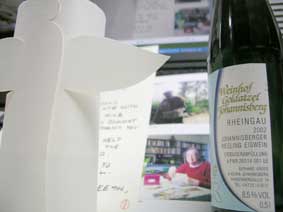


Thank you. Thank you.
What is this?................Thank you.




sample, other catalog, top page,
the day...washiya in paris 2004,
in New Yorl 2005, and in Paris 2006 ambiente 2008